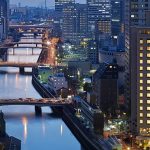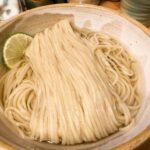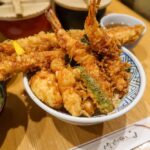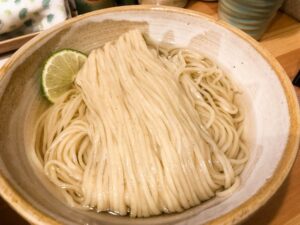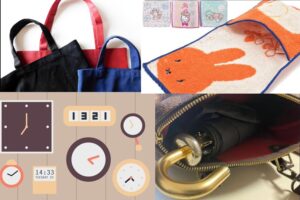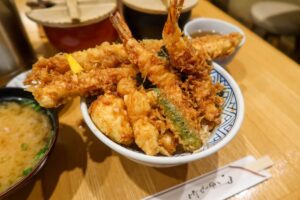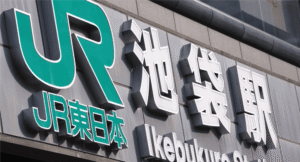Shinto shrines are found throughout Japan, ranging from humble roadside altars to grand complexes. Architecturally unique to Japan, each shrine worships a different deity. These deities serve various purposes: some are protectors of wealth, others ward off disasters and evil, and still others promote marital harmony. While most visitors include several religious sites on their itinerary, this feature focuses on three of Tokyo’s most popular Shinto power spots, each sought for a specific blessing: overall fortune, marital harmony and love, and wealth.
Meiji Jingu (明治神宮)
The first shrine on this list is Meiji Jingu. Located in Harajuku, it’s considered an essential visit for anyone traveling to Tokyo. Among all the shrines in Japan, Meiji Jingu is said to have the largest number of visitors for hatsumode, the first shrine visit of the new year. On the first three days of the year (Jan 1-3), the queue for hatsumode is so long that it can take several hours from entering the large torii gate to arriving at the main hall.

There are several power spots within the precincts to experience the healing energy of the earth and feel rejuvenated. Surrounded by lush greenery, Meiji Jingu instills a sense of calm from the moment you walk through the massive torii gate, which is considered the first energy point. Its height is about 12 meters, and the diameter of each column is about 1.2 meters. It is said that the wood used is more than 1,500 years old. As you walk this path toward the main hall, you will easily forget that you are in one of the busiest cities in the world.

Along the way, you will come across a wall of sake barrels that have been gifted as an offering to the Meiji Emperor by sake breweries from all over Japan. This iconic spot features over 200 barrels, and its immense scale can be quite overwhelming.

After seeing the sake barrel wall, many visitors continue along this path. However, we strongly recommend that you turn left on the path opposite the barrels, so that you don’t miss the most important power spot at Meiji Jingu, the Kiyomasa Well.
Kiyomasa Well is located within the Inner Garden, which has an entrance fee of 500 yen. You will pass through beautiful areas of blooming irises or azaleas depending on the season and ponds adorned with lotuses.

The lotus ponds, the iris flower gardens and the ancient forest all receive water from this well. According to ancient maps, it is said that the forest within Meiji Jingu is located at a confluence of a power line (dragon pulse/vein) that comes from Mount Fuji leading straight to the Imperial Palace. The Kiyomasa Pond coincides with a dragon hole power spot which is filled with energy from the earth. Perhaps it is precisely because of being irrigated by divine water that the iris flowers here have an incomparable charm.

Tokyo Daijingu (東京大神宮)
Within a short walk from Iidabashi Station is Tokyo Daijingu, the most well-known power spot for praying for love. No matter which day you visit this shrine, you will see many visitors.

Couples often visit to pray for a long-lasting, loving relationship, while singles seek blessings to find true love. The shrine is widely known as the most powerful spot in Tokyo for all matters of the heart.

The ema, votive plaques to write your wishes or prayers on, come in many designs. Most are associated with praying for love and are incredibly cute. In Japanese, “enmusubi” (縁結び) refers to the establishment of good relationships and ties with the people and things in your life. On many ema here you will see this word.

The omikuji, i.e. fortune slips, are also available in several designs. The origami kimono dolls in colorful patterns are adorable. If you pick a fortune and get a bad one, tie it to the designated area.

The amulet featuring lily-of-the-valley (suzuran), which symbolizes happiness, is exquisite and classy. A popular souvenir among girls who come to pray here.

Koami Jinja (小網神社)
Compared with the two shrines mentioned above, Koami Jinja is not well-known among foreigners, and it is much smaller than the other two shrines. However, it is treasured among citizens of Tokyo. Located close to Ningyocho Station, it structurally follows Kaguraden architecture.

Koami Jinja, originally built in 1466, is particularly famous because both the shrine and the land around it were said to have been spared from damage after the Great Kanto Earthquake and the Great Tokyo Air Raid. This preservation led the shrine to be associated as a protector that wards off evil and brings good fortune.

At the entrance is Ebisu, one of the seven gods of good fortune in Japan, whose head has been rubbed by many.

The shrine also has a Zeni-arai-no-i, which is a well where you wash money. It is said that if you wash money and put it back in your wallet, you will have good luck in terms of wealth.

The omikuji at this shrine is very special. It is made of real silkworm cocoons, the fortune paper is hidden within.

In addition to the unique omikuji, there are also many lucky charms for sale. You can surprisingly find a range of amulets that make for great souvenirs.

If you have the opportunity to visit Tokyo in the future and are interested in experiencing the power spot culture of Japan, consider visiting the above three shrines.



